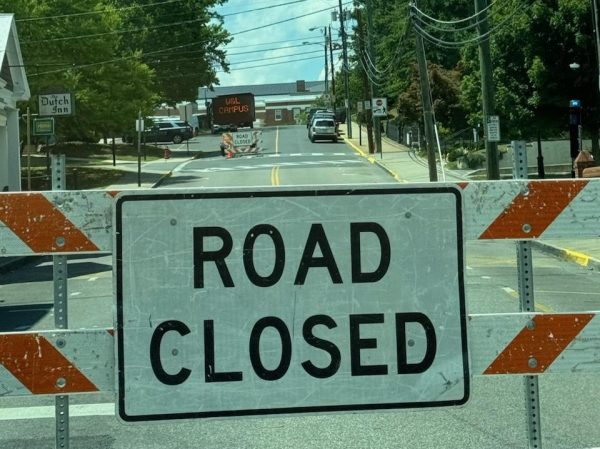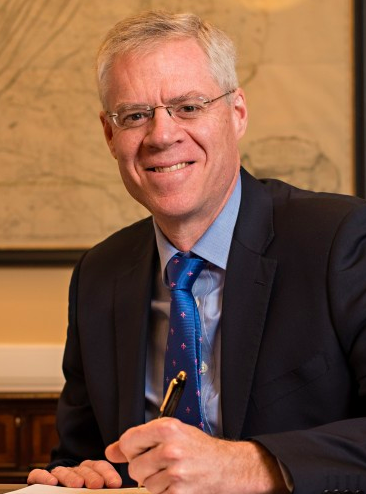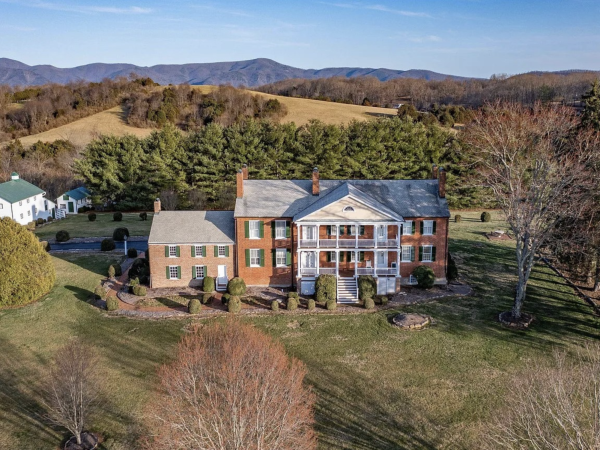University acknowledges trailblazers in controversial renaming of buildings
The move has sparked backlash from some community members, but the Board of Trustees says it’s not backing down
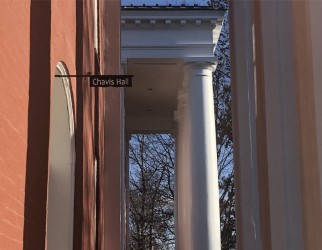
The building on the Colonnade formerly known as Robinson Hall is now named Chavis Hall, in recognition of John Chavis, the first African-American to receive a college degree in the U.S. Photo by Laura Calhoun, ’20.
December 3, 2018
The renaming decision has sparked a variety of reactions from students, alumni, faculty and outsiders when the decision garnered national news attention from the likes of The Washington Post and conservative-leaning newspaper The Washington Times.
“We’ve had a great deal of feedback – not all negative, but certainly not all positive,” J. Donald Childress, ‘70, rector of the university Board of Trustees, said. “The general reaction in life is people are afraid of change.”
Two weeks after the name changes were made public, students found fliers on campus attributed to the Loyal White Knights of the Klu Klux Klan, based in North Carolina, according to their website. One flier directly targeted the university, reading “Washington and Lee University…K-K-Keep the name the same!!!” and ended with a threat – “you’ll be the ones going over the cliff!!!”
University President Will Dudley said the fliers were appalling but does not regret the name change decisions referenced.
“If you boil it down, I think it’s a horrible thing, but it isn’t unique to W&L and I don’t think it rejects our campus culture,” Dudley said. “We’re living in a larger context, and these groups are active on college campuses all over the country.”
The decision to rename the buildings formerly known as Robinson Hall and Lee-Jackson House was announced on Oct. 9 in an email from Dudley and Childress.
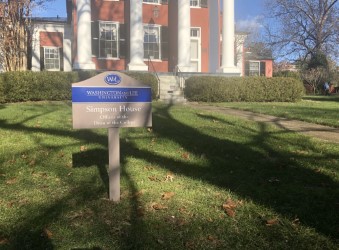
“When we finally ended up voting, we had a very, very strong consensus,” Childress said. “We thought that those were two names that had a special place in W&L’s history… and deserved to be memorialized in the manner that we chose.”
Chavis Hall was named in recognition of John Chavis who was the first African-American to receive a college degree in the United States. He graduated from Washington and Lee’s predecessor Washington Academy in 1799.
Simpson House was named after Pamela Hemenway Simpson, the first tenured female professor at Washington and Lee. She was integral to the university’s transition to co-education in the 1980s as the chair of the Co-Education Steering Committee and served as associate dean of the College, according to an article in The Columns.
The name changes were suggested as part of the report by the Commission on Institutional History and Community, given to Dudley and shared publicly in May. The Commission recommended renaming the building formerly known as Robinson Hall in recommendations six and 27 and recommended renaming Lee-Jackson House, Lee Chapel and Lee House in recommendation 29.
Dudley wrote in his response to the Commission’s report that the Board of Trustees chose to retain the names of Lee Chapel and Lee House.
The Board of Trustees also looked to the university’s new Strategic Plan for guidance when deliberating about possible name changes.
In the October email, the Board of Trustees also announced two changes to Lee Chapel, including closing the doors in front of the chapel’s statue of Robert E. Lee during university events and honoring the Commission’s recommendation to use civilian portraits of Lee and George Washington rather than military ones.
The military portrait of Lee was changed in October, and the portrait of Washington will be exchanged for a version in civilian attire in mid-December, thanks to a two-year loan from George Washington’s Mount Vernon.
Dudley said hiring a director of institutional history is a critical next step in fulfilling some of the Commission’s recommendations and guiding the future of educating people about the university’s history.
“There were a lot of good recommendations in the Commission report about how to do a better job with education around our history,” Dudley said. “One of the most important ways to advance those is to hire a director of institutional history and create a museum and make sure that we have both people and facilities whose job it is to advance that educational work.”
Dudley appointed a committee of seven university faculty members to aid in the search for a director of institutional history. The committee is working in conjunction with the national search firm Storbeck Pimentel & Associates, which has expertise in hiring executive positions in the education and nonprofit sector, according to its website.
Brant Hellwig, dean, professor of law and chair of the search committee, said that partnering with an outside agency is typical for any hiring process in higher education and is critical for finding the best person for the job.
“We’re going to hire somebody who’s an expert in not only presenting our institutional history, but developing it for presentation,” Hellwig said. “It’s just a matter of developing the broadest possible pool of qualified candidates.”
The job description posted on the search committee’s webpage tasks the future director of institutional history with “lead[ing] the process of envisioning and developing a museum to explore the uni- versity’s history” and creating “educational programming for the campus community and the public.”
Hellwig said the search committee hopes to move forward next semester with initial interviews and intends to ll the position by the start of the next academic year in July 2019.
Though no students will serve on the committee, there is a comment submission form on the director of institutional history search webpage, which can be found on the Washington and Lee website.
Childress said the Board of Trustees does not intend to make any other name changes, meaning the Commission recommendations to rename Lee House and Lee Chapel will not come to fruition.
“We’re not going to change the name of the university,” Childress said. “There is no discussion going on at all about making any other name changes of any sort.”



